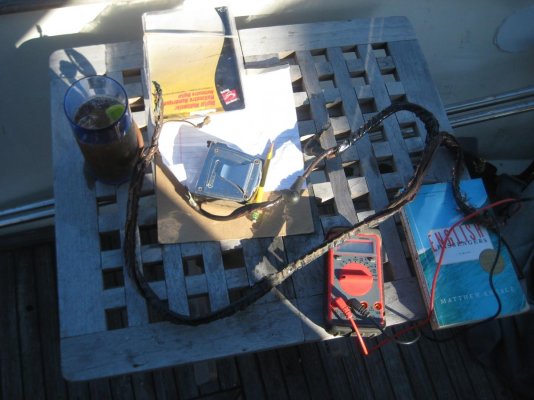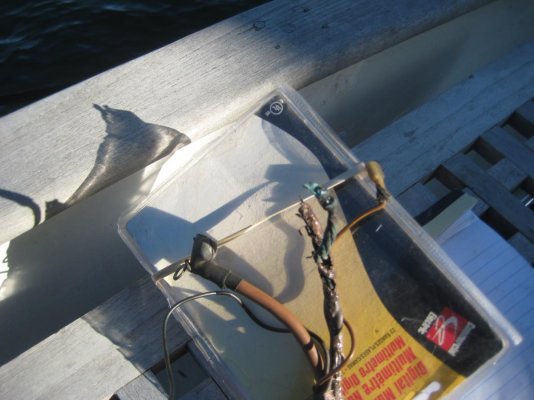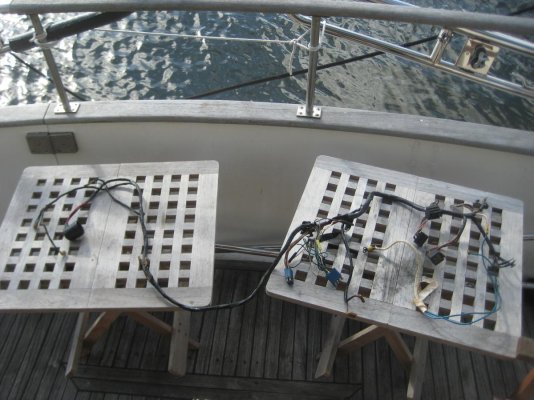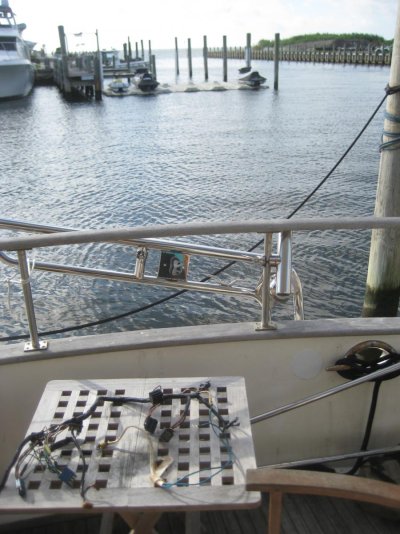DHeckrotte
Guru
It's the gift that keeps on giving!
The post I originated last year, and is currently 'stuck' to the top of the list, finished with my reporting that I had taken the MRBF post fuses out of the engine start cabling and replaced 'em with mechanics' sockets. At least as good as a penny in an old-style house fusebox, but the AYBC does not require fuses in the starting circuits.
I did not report that, while the port engine will start, the starboard engine's alternator idiot light lights as soon as the battery switch is 'on'. The engine will start, but the idiot light remains on and the ammeter does not budge from zero. When we replaced the battery wires at the starter, the + stud turned. I assumed that we'd damaged a connection within the starter (solenoid equivalent is within the starter).
I got my ever-willing, flexible son back aboard today and he discovered that all the large wire's insulation between the starter and the alternator was melted. We removed the alternator and found that it was an 'aftermarket' unit from Slovakia, had been thoroughly wet and was covered with corrosion. We removed the wiring harness and found that there was no fuse where the port engine has one. Presumably, the PO's 'mechanic' had thought it unnecessary.
I had started to make a new harness and thought it reasonable to measure and trace the wires so that the new one matches the Perkins original. I'm quite sure, and remain quite surprised that the fuse is on the ground side of the alternator wiring. That is, the alternators' own case is not the ground; it has a separate fused ground tagged onto the starter motor mounting bolts.
Pics show the harness and the end that tags onto the alternator. Thoroughly corroded at the connection.
I'm looking for your readings on your baloney meters. I'm self-medicating with Goslings and Tonic.
The post I originated last year, and is currently 'stuck' to the top of the list, finished with my reporting that I had taken the MRBF post fuses out of the engine start cabling and replaced 'em with mechanics' sockets. At least as good as a penny in an old-style house fusebox, but the AYBC does not require fuses in the starting circuits.
I did not report that, while the port engine will start, the starboard engine's alternator idiot light lights as soon as the battery switch is 'on'. The engine will start, but the idiot light remains on and the ammeter does not budge from zero. When we replaced the battery wires at the starter, the + stud turned. I assumed that we'd damaged a connection within the starter (solenoid equivalent is within the starter).
I got my ever-willing, flexible son back aboard today and he discovered that all the large wire's insulation between the starter and the alternator was melted. We removed the alternator and found that it was an 'aftermarket' unit from Slovakia, had been thoroughly wet and was covered with corrosion. We removed the wiring harness and found that there was no fuse where the port engine has one. Presumably, the PO's 'mechanic' had thought it unnecessary.
I had started to make a new harness and thought it reasonable to measure and trace the wires so that the new one matches the Perkins original. I'm quite sure, and remain quite surprised that the fuse is on the ground side of the alternator wiring. That is, the alternators' own case is not the ground; it has a separate fused ground tagged onto the starter motor mounting bolts.
Pics show the harness and the end that tags onto the alternator. Thoroughly corroded at the connection.
I'm looking for your readings on your baloney meters. I'm self-medicating with Goslings and Tonic.




